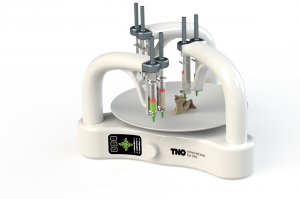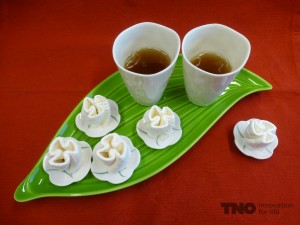Imagine pushing a button and printing just about anything — tools, clothes and even food. While it sounds too good to be true, scientists have successfully developed 3-D printing technology that has already printed various items from guns to chocolate.
And scientists are just getting started. Once the process is perfected, 3-D printing is predicted to make a huge difference in the future life of the average person and the world as a whole.
Experts believe the 3-D printing of food can help with world hunger by providing those in starving countries with nutritious food. These countries can put just about anything nutritious into the machine, whether it be insects or algae, to create a new and tasty food. In addition to helping those who need food, the technology may make eating healthy easier.
Dr. Kjeld van Bommel of TNO, the research company based out of the Netherlands developing the 3-D food printing technology, explained the food printing process.
“Starting from the pureed food materials (e.g. broccoli, or chicken) we add a type of gelatin to bind it and then print 3-D shapes that have the shape of the original foodstuff but are much softer and hence can be eaten by people with dysphagia,” van Bommel said. “This allows people to eat with a knife and fork and have a ‘regular’ meal together with other people.”

Those with special needs or who want a tasty food that has the nutrients of fruits and vegetables can get it by choosing what goes in the food. The food can be made quickly, which will lower cooking times and ensure that people will always come home to a hot meal.
NASA hopes to also use this technology in future space missions to provide astronauts with tasty, nutritious food that they have never had before. David Steitz, senior public affairs officer for the Office of the Chief Technologies at NASA, has high hopes for the future.
“This technology holds tremendous potential for future space exploration,” Steitz said.
The process must be perfected before it can be used in actual space flights. The food, which is created layer by layer, must hold the nutrients that astronauts need on their journey. The difference of gravity in space than on Earth is a complication as well. NASA plans to move slowly to accommodate these issues.

“The first printers will start by building test items, such as computer component boards, and will then build a broad range of parts, such as tools and science equipment,” said Aaron Kimmer, CEO of Made in Space.
Once 3-D printed food can be used in space flights, the men and women in the shuttle will be able to decide what they want to eat and have it immediately. Because the food astronauts currently eat is bland and does not hold as many nutrients as they would like, this technology will be huge for those in the space program. It will be crucial to the success of future missions and will allow NASA to push farther into space than ever before by lowering the amount of cargo space that must be used for food.




